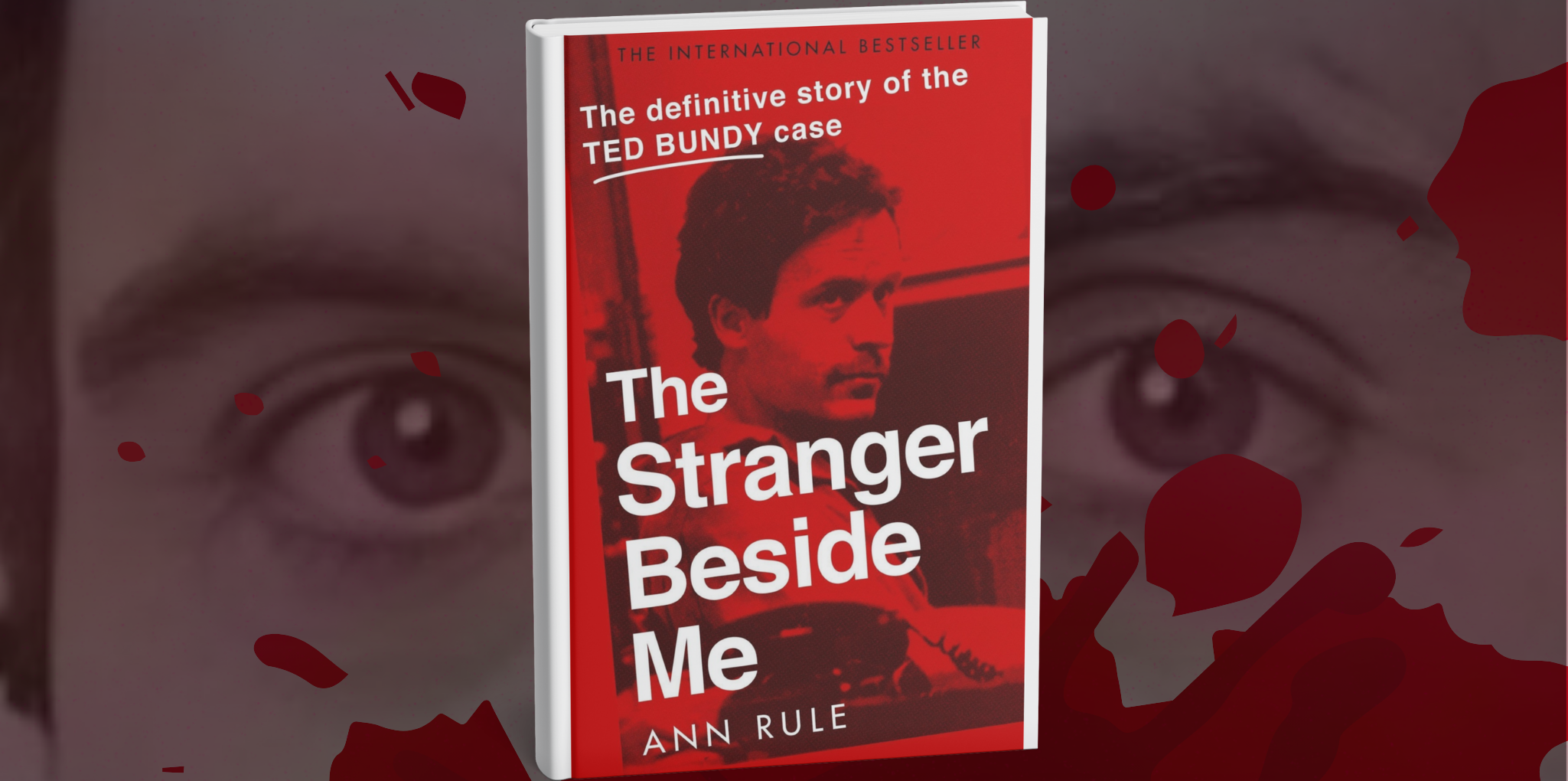
Book Review: The Stranger Beside Me: The Inside Story of Serial Killer Ted Bundy by Ann Rule
A chilling, personal exploration of Ted Bundy’s crimes, offering unparalleled insight into the mind of a killer and the deep betrayal of trust.
In The Stranger Beside Me, Ann Rule achieves what few true crime authors could even imagine—an intimate portrait of a man who was both her close friend and one of history’s most infamous serial killers. Rule’s friendship with Ted Bundy before his arrest and her subsequent journalistic pursuit of his crimes create a narrative that is both deeply personal and meticulously investigative. The result is a book that stands as a definitive account of Bundy’s horrifying double life and an enduring classic in the true crime genre.
Bundy was a master manipulator, a man who seemed to embody the qualities of charm, intelligence, and ambition. To his friends, colleagues, and even law enforcement, he appeared to be a model citizen—handsome, articulate, and destined for success. Beneath this façade, however, lurked a predator who abducted, raped, and murdered young women across the United States during the 1970s. What sets The Stranger Beside Me apart from other accounts of Bundy’s life is Ann Rule’s position as both his confidante and chronicler, giving her a perspective that no other writer could replicate.
A Personal Connection that Redefines True Crime
Rule’s personal connection to Bundy is the cornerstone of the book. As co-workers at a Seattle crisis hotline in the early 1970s, Rule and Bundy developed a friendship built on trust and mutual respect. Rule describes him as kind, empathetic, and dependable—traits that made him an excellent listener to those in crisis. Her memories of these interactions are poignant and disconcerting, as they starkly contrast with the monstrous crimes that would later come to light.
This friendship complicates Rule’s narrative, as she struggles to reconcile the image of the charismatic young man she knew with the predator revealed in police reports and courtroom testimony. This duality—the Ted Bundy who was her friend and the Ted Bundy who was a serial killer—is a recurring theme throughout the book, creating a tension that drives the narrative forward.
Rule does not shy away from sharing her own emotional turmoil. When Bundy was first arrested in 1975, she grappled with disbelief, finding it almost impossible to accept that the man she had trusted could be responsible for such heinous crimes. Even as evidence mounted against him, Rule maintained contact with Bundy, exchanging letters during his imprisonment. While some critics have questioned this decision, Rule’s honesty about her internal conflict adds depth to her account, making it a compelling exploration of human frailty and the limits of trust.
A Chilling Portrait of a Master Manipulator
One of the most striking aspects of The Stranger Beside Me is Rule’s portrayal of Bundy’s manipulative nature. Bundy was a consummate actor, able to present himself as the ideal boyfriend, friend, or employee while harbouring a dark, insatiable compulsion to kill. Rule’s firsthand experiences with Bundy allow her to dissect his behaviour with a level of detail and insight that few could match.
Through letters and prison correspondence, Rule reveals Bundy’s ability to charm even after his arrest. He portrayed himself as a victim of circumstance, maintaining his innocence and seeking sympathy from those around him. Rule’s access to these private moments provides a chilling glimpse into Bundy’s psyche, exposing the cold calculation behind his actions.
The book also explores Bundy’s motivations and psychological profile. Rule delves into his troubled childhood, marked by ambiguity surrounding his parentage and an abusive grandfather. She examines his obsession with control and power, which manifested in his choice of victims—young, attractive brunettes who resembled a former girlfriend who had rejected him. Rule does not offer definitive answers but instead presents a nuanced portrait of a man whose outward normalcy masked unimaginable depravity.
The Victims’ Stories and the Impact of Bundy’s Crimes
While Bundy’s personality dominates the narrative, Rule does not neglect the stories of his victims. The young women he targeted were intelligent, kind, and full of potential, their lives cut short by his brutality. Rule’s descriptions of their disappearances and murders are both empathetic and harrowing, painting a vivid picture of the devastating impact Bundy’s crimes had on their families and communities.
Rule also highlights the challenges faced by law enforcement in tracking Bundy across state lines. The fragmented nature of police investigations in the 1970s allowed Bundy to evade capture for years, exploiting jurisdictional gaps to continue his killing spree. This aspect of the book provides valuable context for understanding how Bundy was able to operate with such impunity and underscores the importance of advancements in investigative practices.
A Broader Commentary on Society’s Fascination with Evil
Beyond the specifics of Bundy’s crimes, The Stranger Beside Me examines society’s morbid fascination with serial killers. Bundy’s trials became media spectacles, attracting crowds of admirers who saw him as a misunderstood antihero rather than the monster he truly was. Rule critiques this phenomenon, exposing the disturbing dynamics of public perception and the cult of personality that often surrounds high-profile criminals.
Rule also reflects on her own role in this narrative, acknowledging the ethical complexities of writing about someone she once considered a friend. Her candid introspection adds a layer of authenticity to the book, as she grapples with questions of loyalty, betrayal, and the moral responsibilities of a true crime writer.
Strengths and Limitations
One of the book’s greatest strengths is its accessibility. Rule’s writing is engaging and straightforward, making complex psychological and investigative details easy to understand. Her ability to balance personal reflection with factual reporting creates a narrative that is both emotionally resonant and intellectually satisfying.
However, the book is not without its flaws. Rule’s focus on her personal connection to Bundy sometimes overshadows other aspects of the story, such as the victims’ lives or the efforts of law enforcement. Some readers may find her initial reluctance to accept Bundy’s guilt frustrating, though it serves to illustrate the insidious nature of his manipulation.
Additionally, while Rule provides a compelling psychological portrait of Bundy, she does not delve as deeply into his crimes as some readers might expect. The book prioritises character study over detailed accounts of his murders, which may disappoint those seeking a more forensic approach.
A Seminal Work in True Crime Literature
The Stranger Beside Me is an unsettling and unforgettable account of one of history’s most notorious serial killers. Ann Rule’s unique position as both friend and chronicler of Ted Bundy’s crimes creates a narrative that is as compelling as it is haunting. By blending personal reflection with meticulous reporting, Rule offers a nuanced exploration of trust, betrayal, and the darkness that can hide behind a charming smile.
This book is essential reading for anyone fascinated by the complexities of human nature and the chilling realities of true crime. Despite its limitations, it remains a standout work in the genre, providing a cautionary tale about the masks people wear and the evil that can lurk beneath.
The Review
The Stranger Beside Me: The Inside Story of Serial Killer Ted Bundy
The Stranger Beside Me remains a landmark in true crime writing. Rule’s unique perspective offers unparalleled insight into Bundy’s dual nature, capturing the tension between his outward charm and inner depravity. The book’s blend of personal narrative and investigative journalism sets it apart from other works in the genre, making it essential reading for true crime enthusiasts.
PROS
- Unique, deeply personal perspective on Ted Bundy.
- Engaging, accessible writing style.
- Valuable psychological insights into Bundy’s manipulative nature.
- Empathetic portrayal of the victims and their families.
- Contextualises Bundy’s crimes within broader societal and investigative frameworks.
CONS
- Overemphasis on Rule’s personal connection at times.
- Limited exploration of the victims’ lives and law enforcement’s perspective.
- Some readers may find Rule’s initial disbelief frustrating.

























 Amazon
Amazon























